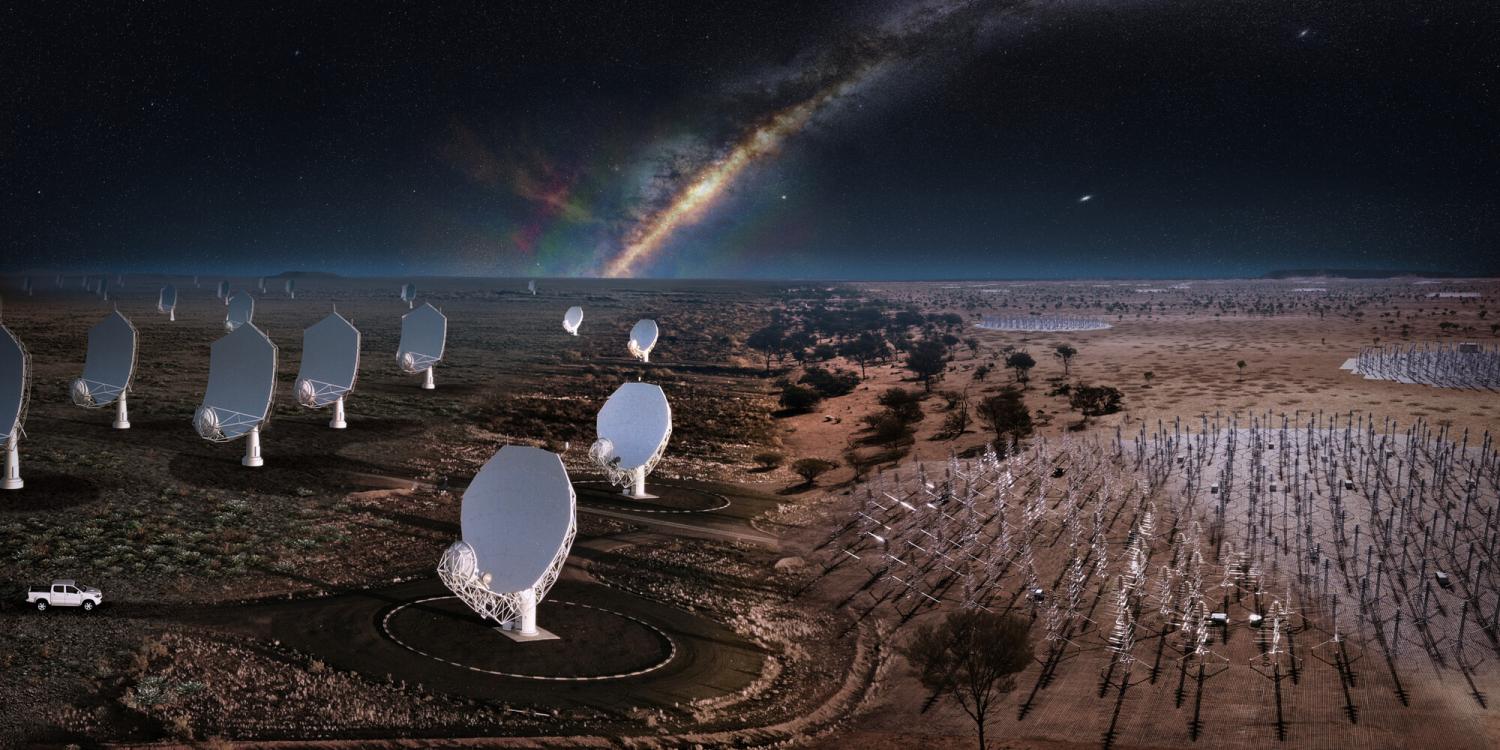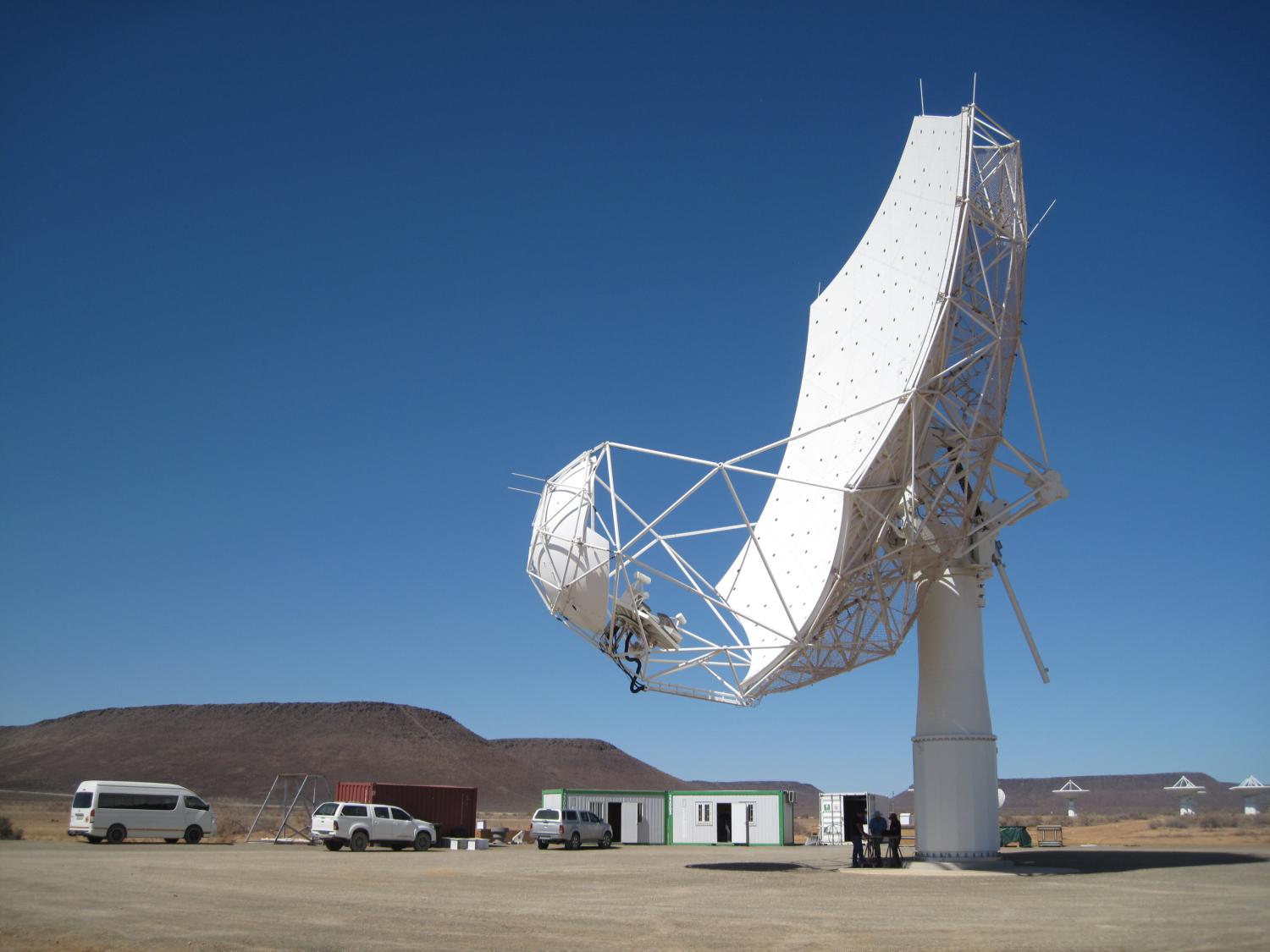Frequently Asked Questions
How big will the SKA telescopes be? Where will they be located? Find the answers to common questions about the SKA project.

An artist's impression of both SKA-telescopes, blending hardware already on the ground (in the centre) with digital renderings (SKA-Mid dishes on the left and SKA-Low antennas on the right).

An SKA-Mid prototype dish on site in South Africa. SKA-Mid will comprise 197 dishes, including the existing 64-dish MeerKAT array.

A prototype SKA-Low station on site in Australia. There will be 512 such antennas stations, each comprising 256 antennas.

One global observatory, two telescopes, three continents: SKAO Global HQ is located at the historic Jodrell Bank Observatory site near Manchester, UK, while the SKA telescopes are being constructed in Australia and South Africa.
Laaste gewysig op 29 August 2024




